Public attitudes to coronavirus: May summary
This report includes some high level findings from recent polling work on public attitudes to the coronavirus pandemic in Scotland. A report covering earlier survey work was published on 8 May 2020.
This document is part of a collection
3. Wellbeing
Levels of anxiety and happiness
The YouGov survey included two of the Office for National Statistics' (ONS) wellbeing questions[2] to measure levels of anxiety and happiness. Respondents were asked how anxious and how happy they felt 'yesterday', on a scale of 0 to 10.
As shown in Figure 9, anxiety levels have remained stable and relatively high since the end of April. However, as reported previously, anxiety levels at the end of March were much higher with 60% feeling highly anxious (score of 6-10)[3].
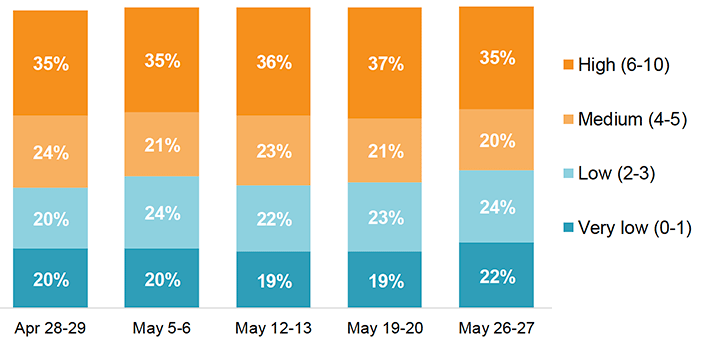
Source: YouGov weekly Scotland survey. Base (n=1004-1037)
As shown in Figure 10, the majority of respondents reported high or very high levels of happiness (score of 7-10), and this has increased slightly since the end of April. Just under one in five felt very low levels of happiness (score of 0-4), which has remained stable over the past month but was higher at the end of March (34%)[4].
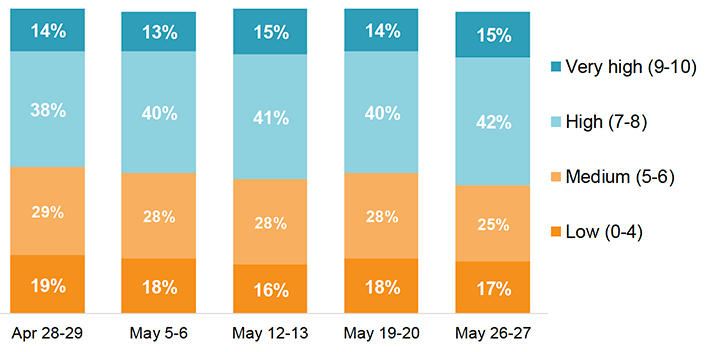
Source: YouGov weekly Scotland survey. Base (n=1004-1037)
Coping and worries
To understand worries in relation to Coronavirus, respondents were asked whether they agreed or disagreed with the statements shown in Figure 11. The majority agreed that they felt worried about the Coronavirus situation and this has remained relatively stable since the end of April. However, as previously reported, the proportion who agreed with this statement at the end of March was higher at 80%[5]. Three quarters of respondents agreed that they were coping okay with the current coronavirus situation, which has remained stable throughout the month.
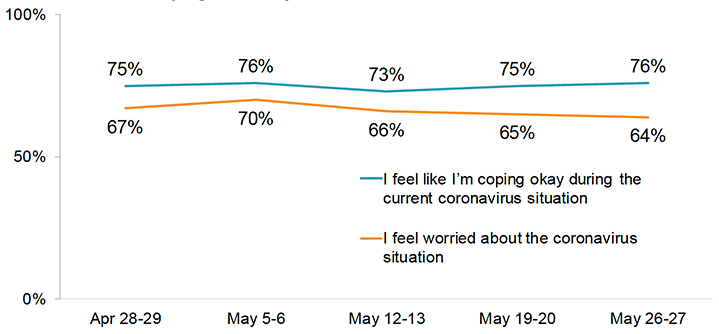
Source: YouGov weekly Scotland survey. Base (n=1004-1037)
Respondents were asked at the start and end of May how worried they were about a range of issues in relation to restrictions being lifted. At the end of the month, respondents were most likely to be very or fairly worried about a second spike in infections, using public transport and going back to their place of work (among those working from home, furloughed or laid off). Parents were also likely to be worried about their children going back to school. However, the proportions worried about each concern fell between the survey waves.
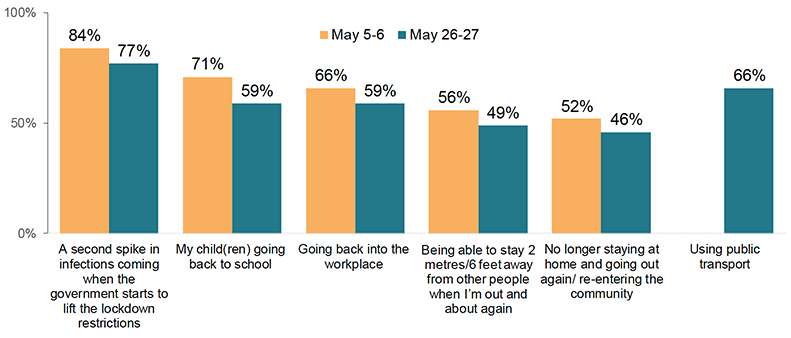
Source: YouGov weekly Scotland survey. Base (n=1004-1036)
Optimism
The majority agreed that they find it is getting easier living with restrictions as they get used to it, and this has remained stable since the end of April. In the most recent survey wave, over half of respondents agreed that things will start to get better soon, an increase since the middle of May.
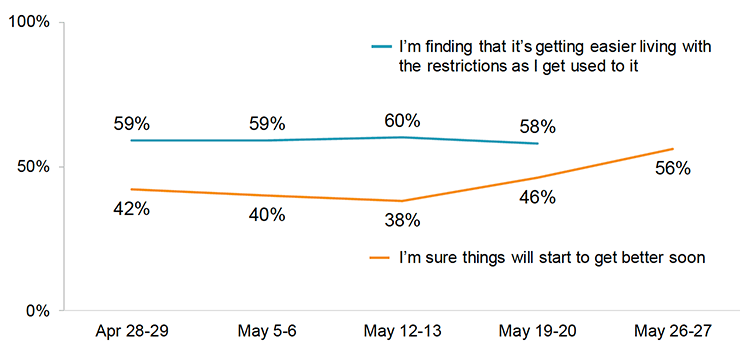
Source: YouGov weekly Scotland survey. Base (n=1004-1037)
Contact
Email: covid-19.behaviours@gov.scot
There is a problem
Thanks for your feedback